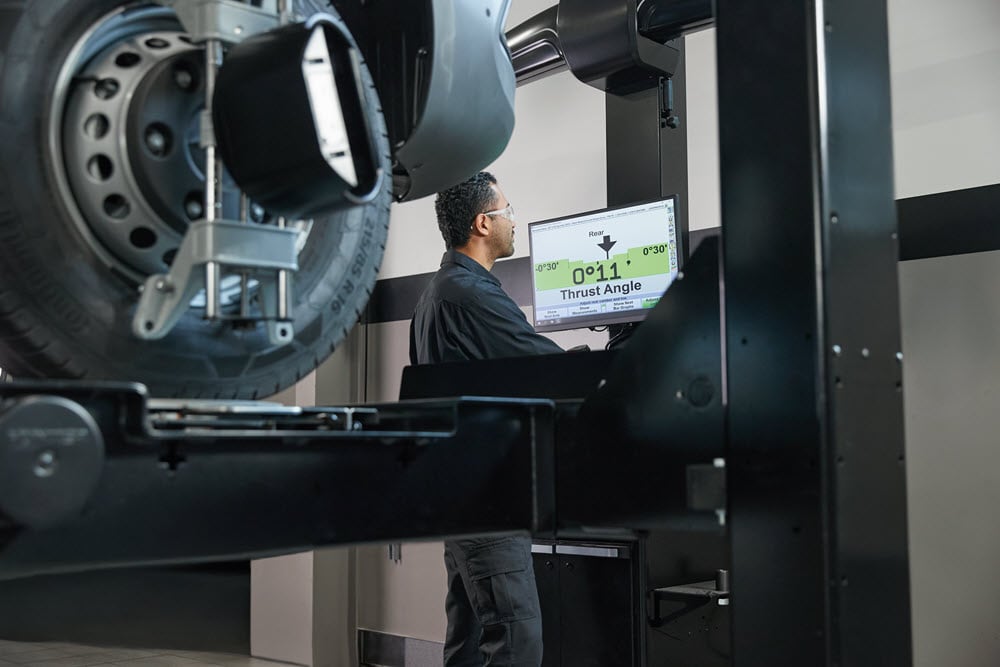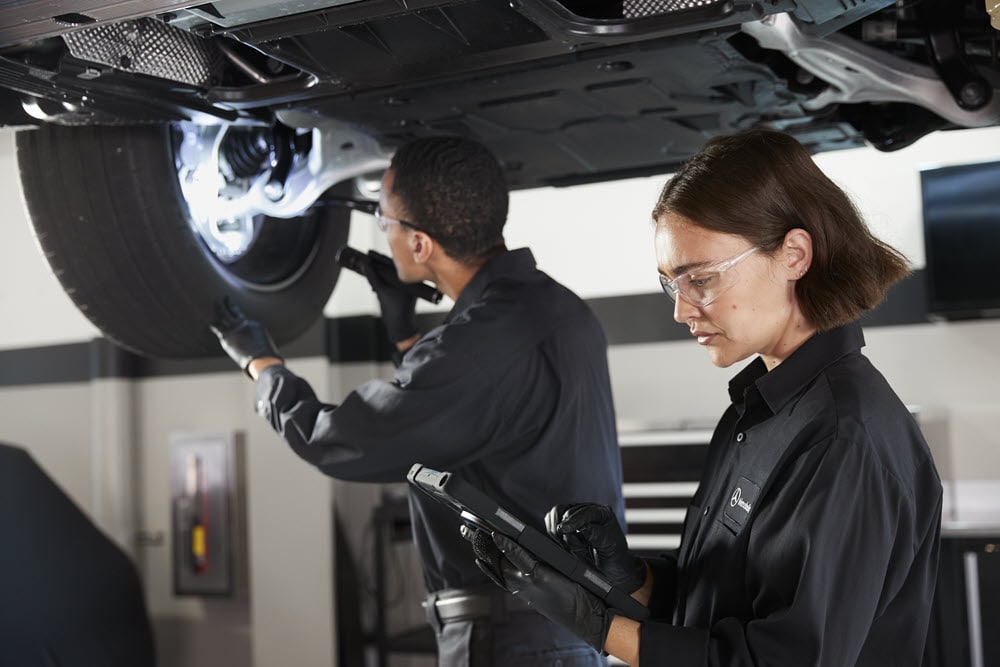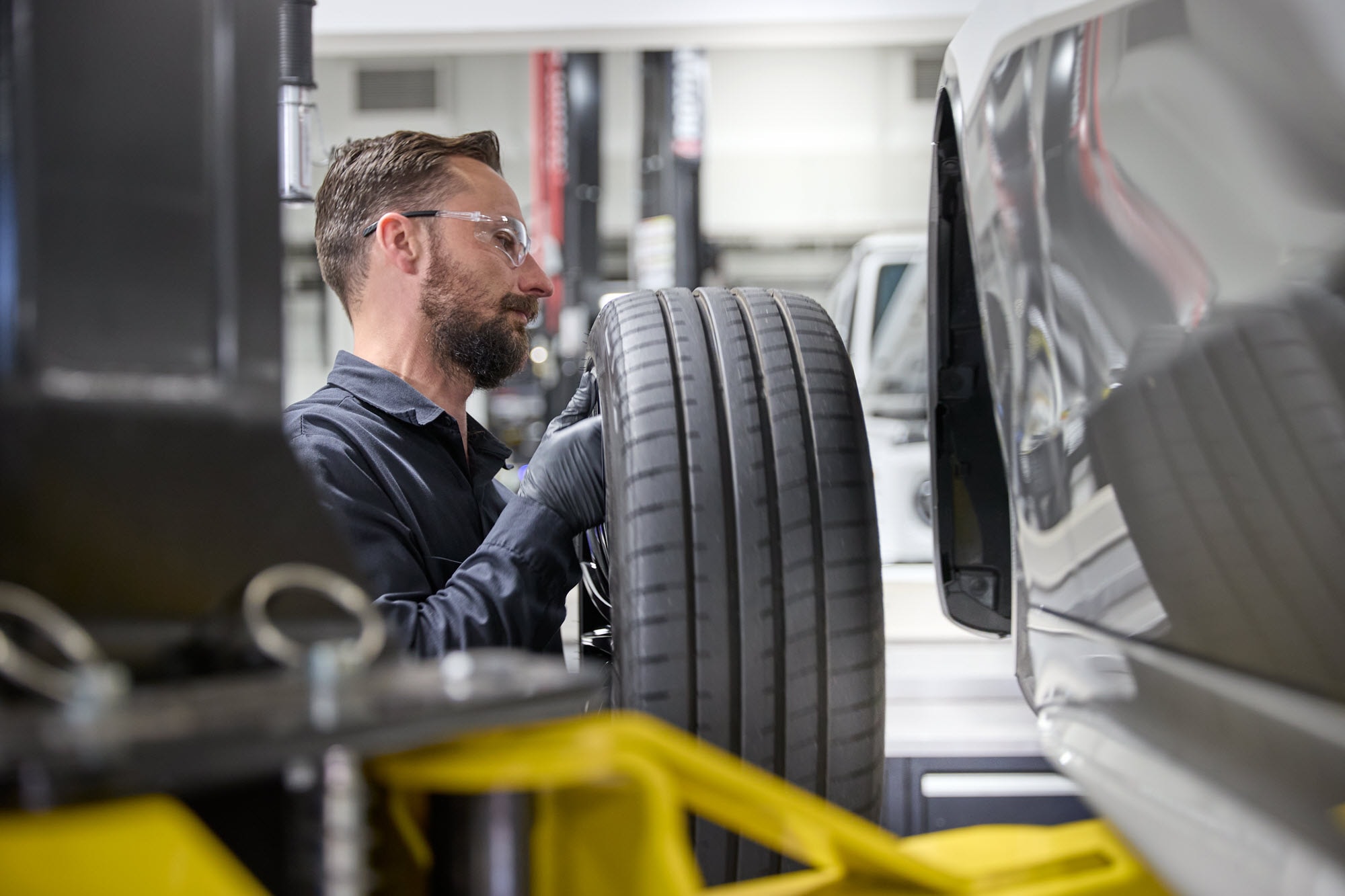Knauz Continental Autos Alignment Information
Alignment Service
Since 1934, the Knauz family and our employees have built a company dedicated to serving our customers
At Knauz Continental Autos, our service advisors recommend checking your four-wheel alignment to see if you notice any unpredictable steering behavior, increased road noise, or decreased comfort for you and your passengers. Proper wheel alignment depends on three angles: camber, toe, and caster. While most Mercedes-Benz models are less likely to experience caster angle misalignment, the camber and toe can change due to normal wear and tear.
Each angle must be within a fraction of a degree to ensure correct alignment. If they are off, you may notice your vehicle pulling to one side at highway speeds, the steering wheel shaking at certain speeds, or the steering wheel resting off-center.

Why Is Wheel Alignment Service Important?
What Services are Provided during a Wheel Alignment Service?
The four-wheel alignment service offered at Knauz Continental Autos encompasses the following components:
- Mounting the vehicle onto an advanced four-wheel alignment machine at your local Mercedes-Benz service center.
- Conducting a precise assessment of the position and angle of each wheel through three critical measurements: camber, toe, and caster.
- Implementing necessary adjustments to each wheel and suspension corner to optimize vehicle performance.
- Providing a complimentary multi-point inspection to identify any additional maintenance needs.
- Offering a complimentary tire tread analysis to enhance safety.
- Conducting a complimentary vehicle wash to ensure the car's appearance is maintained.
- Performing a comprehensive road test to verify the successful completion of all work.
This meticulous process underscores our commitment to delivering exceptional service and ensuring the optimal performance of your vehicle.


Tell-Tale Signs Of Improper Alignment
The proper alignment of your wheels are determined by three angles: camber, toe, and caster. Most Mercedes-Benz models will not suffer the caster angle falling out of alignment, but the camber and toe can change over time from wear and tear. Each of these three angles needs to be within a fraction of a degree to be considered correct, leading to your vehicle pulling to one direction at highway speeds, the steering wheel shaking at certain speeds, and even the steering wheel resting off-center.
Tire Rotation Information
For a Mercedes-Benz, rotate tires every 5,000 to 7,500 miles or as recommended in your owner's manual, as the frequency depends on the drivetrain (FWD, RWD, or AWD) and tire type (directional or non-directional). You must consult your owner's manual to determine the correct tire rotation pattern for your specific vehicle, as some models with staggered wheels cannot be rotated at all.
Rotation Frequency -General Guideline:
Most Mercedes-Benz vehicles require a tire rotation every 5,000 to 7,500 miles.
AWD Vehicles:
You may need to rotate tires more frequently, possibly every 3,000 to 5,000 miles, due to the drivetrain.
Staggered Wheels:
Some vehicles have different-sized front and rear tires, which means they cannot be rotated using standard patterns.
Tire Rotation Patterns
The correct pattern depends on your Mercedes-Benz's drivetrain:
Front-Wheel Drive (FWD):
Forward Cross: Front tires move to the rear on the same side; rear tires cross to the opposite front corners.
X-Pattern: Front tires cross to the rear on the opposite side, and rear tires cross to the front on the opposite side.
Rear-Wheel Drive (RWD) & 4MATIC® AWD:
Rearward Cross: Rear tires move directly to the front on the same side, and front tires move to the rear on the opposite side.
Directional Tires:
Swap the front right tire with the rear right tire, and the front left tire with the rear left tire.
When to Rotate -Regular Maintenance:
Rotate tires during scheduled service intervals, such as Mercedes-Benz Service A, which may include tire rotation.
Uneven Wear:
You should also rotate your tires immediately if you notice uneven tire wear

-
Knauz Continental Autos
409 Skokie Valley Hwy.
Lake Bluff, IL 60044
- Sales: (847) 235-3800
 AdChoices
AdChoices